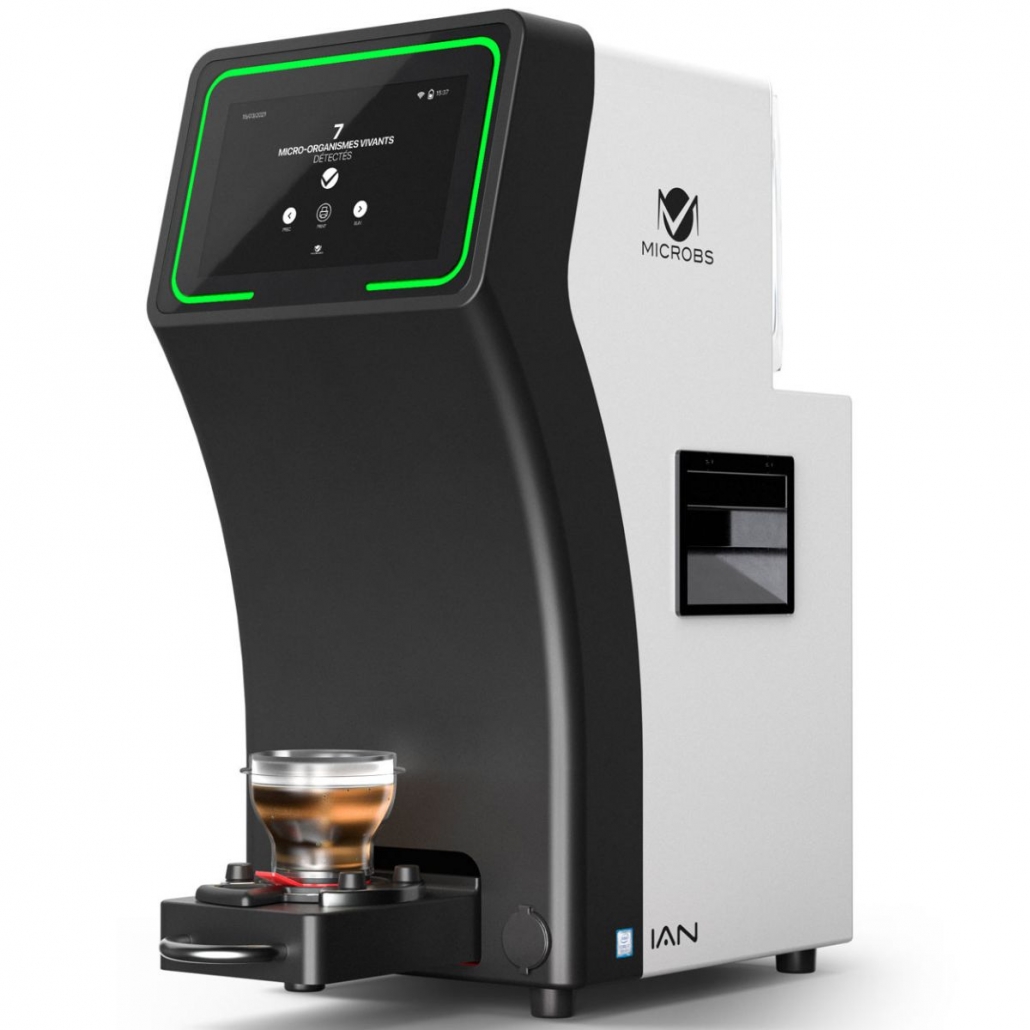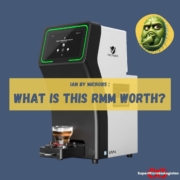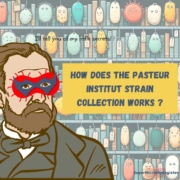How Good is the IAN Rapid Microbiology Method from Microbs?
A rapid microbiology technology that looks like a coffee machine, a sexy yet enigmatic website, and several SuperMicrobiologists talking about it.
That was all we needed to walk through Microbs’ door and request a demonstration of this new Rapid Microbiology Method (RMM).
Content :
Warning: This article was commissioned by Microbs from SuperMicrobiologists. Usually, for this type of article, we meet with users to get their feedback. Unfortunately, we were unable to access the users (but we haven’t given up hope). So, we played guinea pigs ourselves, trying to be as neutral as possible. We’ll let you be the judge.
Performances: IAN, an ultra rapid method
Here are IAN’s performances (claimed by Microbs):
- Result: 15 minutes.
- Quantitative method: from 1 to 5000 microorganisms/filtered volume.
- Tests Available: Total Viable Count to detect bacteria, yeasts, and molds including spores. The technology only detects living microorganisms.
- Protocol: Simply pour the sample into the funnel, and the rest is automatic (filtration, marking, analyzing, and reading of the result).
- Matrices: Filterable products from 0.1 to 200 ml.
Technology: IAN, a solid-phase cytometer … but not only
Microbs presents IAN as a lab partner, not just a technology. This is why it has a human name. But what’s really under the hood?
First disappointment: it doesn’t make coffee. We hope it’s good at microbiology… at least !
The technology in 3 parts:
The Hardware

The first noticeable thing is the compactness of the device (the footprint of an A4 sheet on the bench).
Another striking feature is that everything fits into this small box : the PC, the screen, the filtration ramp, the fluidics.
Unfortunately, the device was presented to us closed; we were not allowed to see what’s inside.
Microbs is very secretive (much to our dismay) about the internals. What we do know is that it’s a solid-phase cytometer, which is a start!
The Cap


The other part of the technology is the filtration cap.
This cap contains the filtration membrane (track-etched membrane) and all the reagents, with nothing else needed for the analysis.
Again, we did not get more information about what is inside the cap. Damn it !
The algorithm
As is often the case these days, we expected to hear about AI (Artificial Intelligence) and… we were not disappointed!
The AI of IAN was trained on more than 40 million events to differentiate a particle from a living microorganism.
Since then, its algorithm has been fixed and no longer evolves (this will simplify validation!).
The algorithm considers about a hundred criteria to discriminate microorganisms from particles… and again, we know nothing more about it.
And now, let’s start the demo.
Protocol: IAN, an ultra-simple procedure
It’s safe to say the procedure is ultra-simple. The device is designed to be implemented next to production lines and used by production staff, not microbiologists.
Here are the different steps :
- Position the cap in IAN’s drawer.
- Add the sample and start the filtration.
- The filtration time depends on the volume (3 minutes for 10 ml and up to 40 minutes for 200 ml).
- Manually close the drawer and start the analysis.
- IAN does the rest. It marks the microorganisms with the reagents located in the cap, then reads what’s on the membrane.
- After 12 minutes, it gives a result in terms of living microorganisms per filtered volume.
No interpretation is needed, no manual validation, no microscopic verification or graph reading. It’s a true black (and white) box 😉
Confidence in IAN will come with validation because you’ll have to take its word for it!
Applications: IAN as a complement to Petri dishes
As long as the matrix is compatible, anything is possible.
Microbs’ positioning is to offer the technology close to production with the goal of having results before even starting production.
IAN is offered as a preventive technology, not a curative one, to avoid discarding batches.
Routine analysis :
- Water that may come into contact with the product.
- Surfaces that may come into contact with the product (rinse water, swabs).
- Air that may be in contact with the product.
IAN can also be used to speed up post-contamination investigations:
- Quickly and precisely locate contamination.
- Ensure corrective actions have worked properly.
This saves time to restart the next production.
Microbs has also developed applications for pharmaceutical product analysis:
- Bioburden in 15 minutes.
- Sterility test in 15 minutes… instead of 14 days!
Microbs is currently developing a test for analyzing cell therapy products like ATMPs. The challenge is significant because it requires detecting contaminants among other cells (which can be very numerous… 10^8 cells/ml).
Stay tuned!
Validation: The challenge for IAN
Validation data is the backbone, and here’s what we’ve gathered:


Moreover, Microbs has conducted a full PQ pharma-type validation, just contact them to get access to it.
Who uses IAN today?
Microbs announces about ten users in France, but we couldn’t get the list… Fortunately, we’re well connected, and two of our SuperMicrobiologists have tested the technology.
The first one experienced a rough launch during Covid… not much to conclude, except that he’s ready to try again once he has internal resources.
The other has conducted several tests and hinted that the method was promising… but couldn’t share more due to a (darn) confidentiality agreement!!!
So, if you are users and want to share your experience, we are interested (anonymously or not, with or without the… SuperMicrobiologists mask!).
The limits of IAN
Like all technologies, IAN has its limits. Here are those we noticed during our demo:
Matrix compatibility
Filtering on a small surface of a track-etched membrane requires a product with few particles, or it clogs. This could limits the number of compatible matrices… but all is not lost for complex matrices; Microbs is working on sample preparation protocols to make other matrices compatible.
If there is any doubt with the compatibility of a matrix, the best it to ask Microbs to run a feasibility study.
Analytical throughput
Aujourd’hui il est impensable de pouvoir analyser une centaine d’échantillons par jour avec IAN. Étant donné que la Today, analyzing a hundred samples per day with IAN is unthinkable. Since filtration is done on the machine, only one sample can be run at a time. Depending on the volume to be filtered (up to 50 minutes for 200 ml), 1 to 5 analyses can be performed per hour.
Unknowns of a new method and a young company:
Like all new methods, there are questions about:
- Technical support/service
- Company sustainability (bankruptcy or acquisition)
- Long-term robustness of the machine
- Supply capabilities to avoid shortages
- etc…
This applies to all young independent companies launching a new product (and sometimes even to older ones!). What we can say from our visit is that Microbs’ founder (Wilfried Ablain) has experienced similar product launches in his career and has prepared his teams for this. For the rest, Microbs seems to have solid investors behind it.
If you are interested in the technology, we invite you to discuss these topics with Microbs.

Conclusion
We had only a half-day demo, but we were impressed by the potential of this technology. It checks almost all the boxes of what one expects from a rapid method: very fast, easy to use, and provides an interpretation-free result.
Now, we eagerly await seeing it in routine use in a laboratory to know if it fulfills all its promises in real conditions!
Next step: meet IAN users to share their experience. If you want to participate, contact us !

















Leave a Reply
Want to join the discussion?Feel free to contribute!